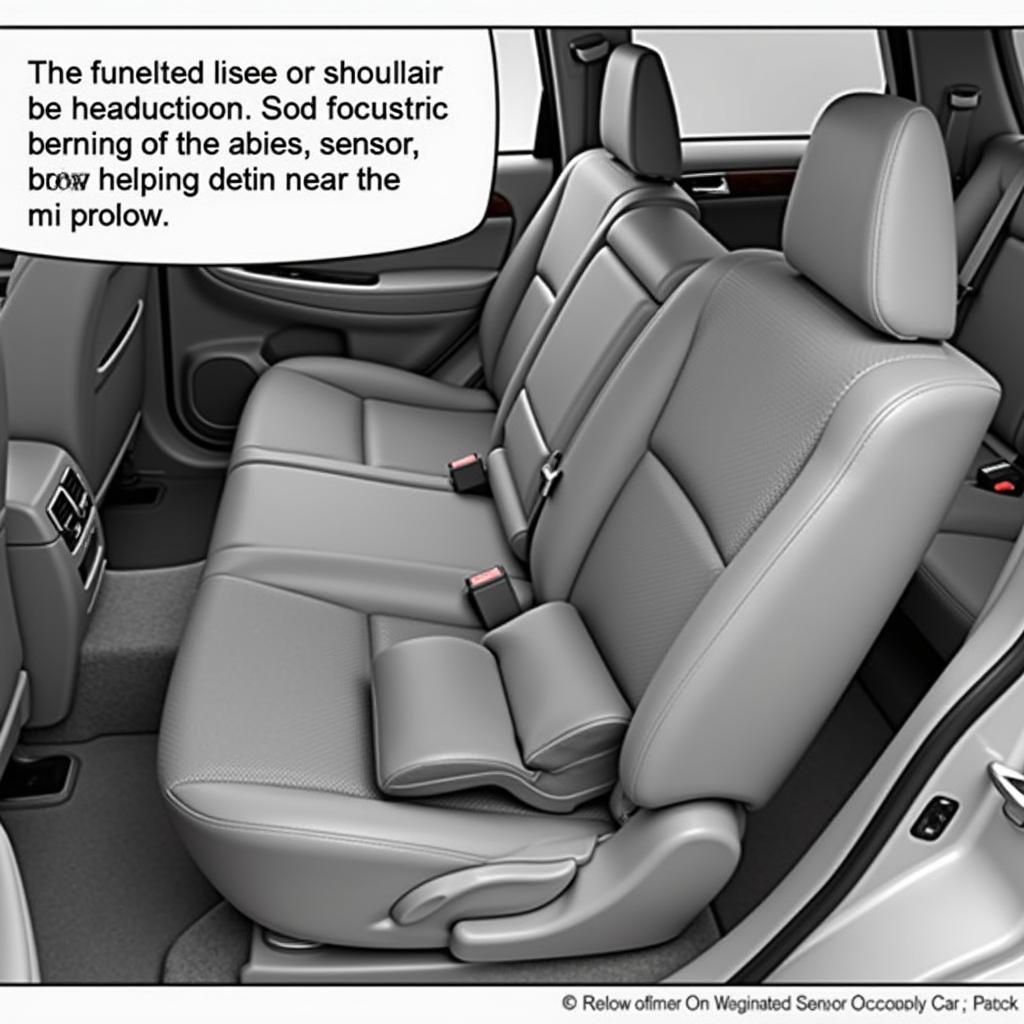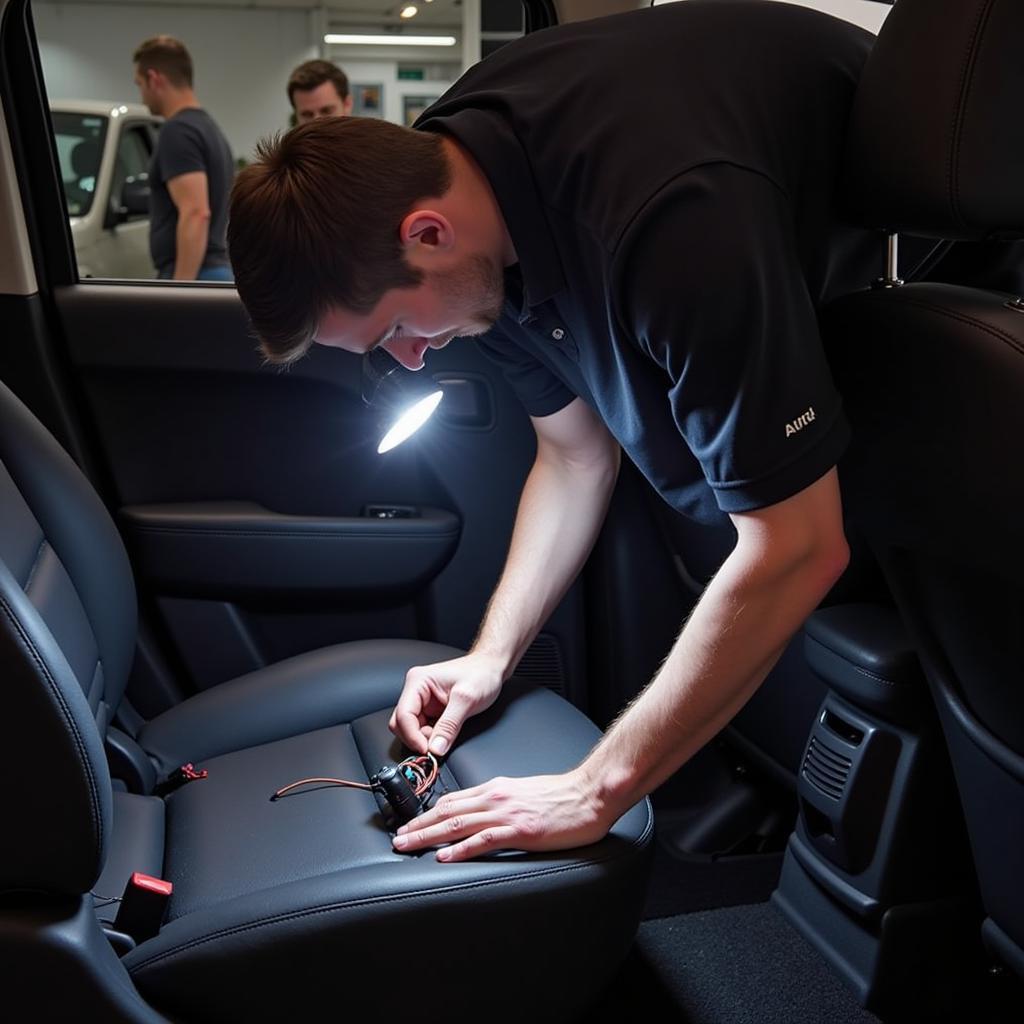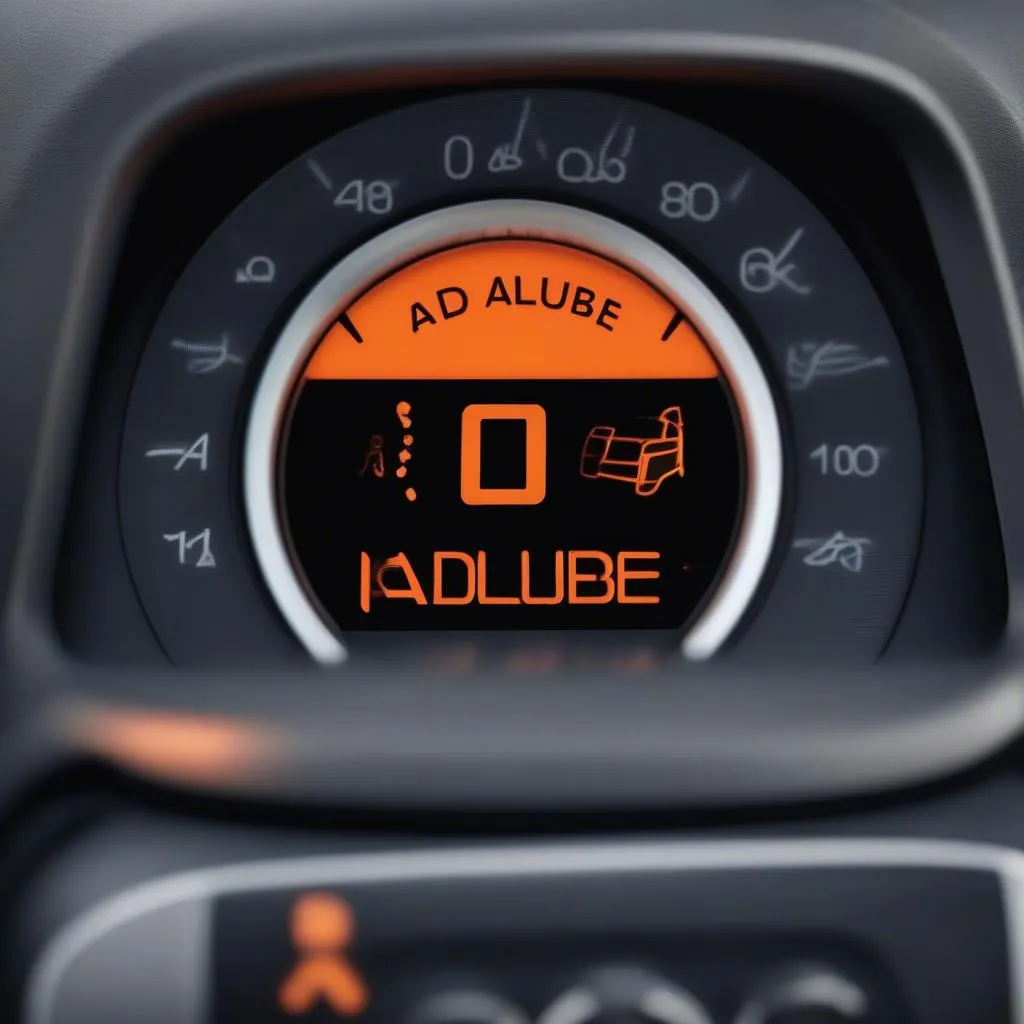The “seat airborne warning” light on your dashboard can be an unwelcome surprise, often accompanied by a chime or message urging you to “Service Airbag System.” While it may seem alarming, this warning doesn’t necessarily signify an immediate danger. Instead, it points to a potential issue with your car’s sophisticated safety system, specifically the Occupant Restraint System (ORS), which includes airbags, seatbelts, and associated sensors.
This comprehensive guide delves into the complexities of seat airborne warnings, equipping you with the knowledge to understand their causes, implications, and potential solutions.
Deciphering the Seat Airborne Warning
Modern vehicles utilize a network of sensors to monitor various safety aspects, including passenger presence, seat position, and seatbelt engagement. The seat airborne warning primarily indicates a problem within this network, often stemming from:
- Faulty Seat Occupancy Sensor: This sensor, usually located within the passenger seat, detects the presence of a passenger and adjusts airbag deployment accordingly. A malfunctioning sensor might fail to detect a passenger, leading to a false warning, or incorrectly register an empty seat as occupied, potentially disabling the passenger-side airbag.
- Wiring Harness Issues: The intricate wiring network connecting the seat occupancy sensor to the ORS control module can experience damage or corrosion, disrupting signal transmission and triggering the warning light.
- Software Glitches: Like any computer-based system, your car’s ORS software can encounter glitches or errors that trigger false warnings.
 Seat Occupancy Sensor Location
Seat Occupancy Sensor Location
Potential Consequences of Ignoring the Warning
While a seat airborne warning might appear as a minor inconvenience, dismissing it can have serious consequences:
- Compromised Safety: The warning signifies a potential malfunction within your car’s safety system, meaning airbags might not deploy correctly during a collision. This can significantly increase the risk of injury to both driver and passengers.
- Expensive Repairs: Ignoring the warning could allow a minor issue to escalate into a costly repair. Early diagnosis and intervention can often address the problem before it requires extensive and expensive component replacements.
Troubleshooting Seat Airborne Warnings
Before rushing to a mechanic, there are a few simple checks you can perform to potentially isolate the issue:
- Check Seatbelt Connections: Ensure both driver and passenger seatbelts are securely fastened. A loose or improperly latched seatbelt can sometimes trigger the warning.
- Inspect Wiring Under the Seat: Carefully examine the wiring harness beneath the passenger seat for any visible damage, loose connections, or signs of corrosion. However, avoid tampering with the wiring if you’re unsure about any aspect.
- Check for Objects Interfering with the Seat: Remove any heavy objects or debris from the passenger seat that might be pressing down on or obstructing the seat occupancy sensor.
 Inspecting Wiring Harness Under Seat
Inspecting Wiring Harness Under Seat
When to Seek Professional Help
If the warning light persists despite performing these initial checks, it’s crucial to seek professional assistance from a qualified automotive technician specializing in ORS diagnostics and repair. They possess the expertise and specialized tools to:
- Accurately Diagnose the Issue: Technicians utilize advanced diagnostic scanners to read fault codes stored within the ORS control module, pinpointing the root cause of the warning.
- Perform Necessary Repairs: Depending on the diagnosis, repairs might involve replacing a faulty seat occupancy sensor, repairing or replacing damaged wiring, or updating the ORS software.
- Reset the Warning Light: After addressing the issue, technicians use their diagnostic equipment to reset the seat airborne warning light, ensuring it functions correctly in the future.
Preventative Measures and Best Practices
While not all issues are preventable, adhering to these practices can help minimize the likelihood of encountering seat airborne warnings:
- Regular Vehicle Maintenance: Schedule routine inspections with a qualified technician to ensure all safety systems, including the ORS, are functioning optimally.
- Careful Handling of Seats and Wiring: Avoid placing heavy objects on seats that could damage the sensor or wiring. Exercise caution when cleaning under seats to prevent accidentally dislodging or damaging connections.
- Address Warning Lights Promptly: Never ignore warning lights related to safety systems. Seek professional help immediately to diagnose and rectify the issue, ensuring the continued functionality of your car’s safety features.
Expert Insights
“Many car owners underestimate the complexity of their vehicle’s safety systems,” says John Miller, a seasoned automotive electrical systems engineer with over 15 years of experience. “The seat airborne warning, while often associated with minor sensor glitches, can sometimes indicate a more serious underlying issue within the ORS. Proactive diagnosis and timely repair are crucial to maintain the integrity of this vital safety system.”
Conclusion
The seat airborne warning, while potentially concerning, serves as a vital indicator of a potential issue with your car’s safety system. By understanding its causes, implications, and solutions, you can make informed decisions to ensure your safety and that of your passengers. When in doubt, always seek professional assistance from qualified automotive technicians specializing in ORS diagnostics and repair. They possess the expertise to accurately diagnose, repair, and ensure the optimal functioning of this crucial safety system.

